





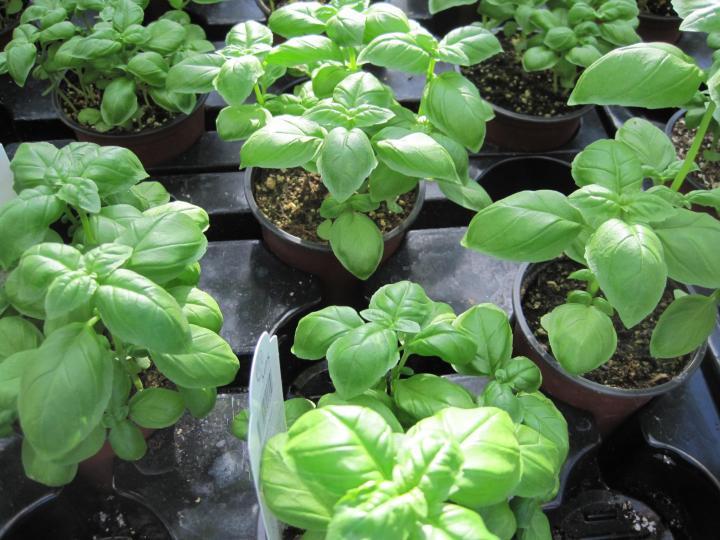
Every spring we plant about a dozen different varieties of basil but I’m told there are over 150 species to choose from! So many basils, so little thyme! Here are some types of basil that I’m crazy about.
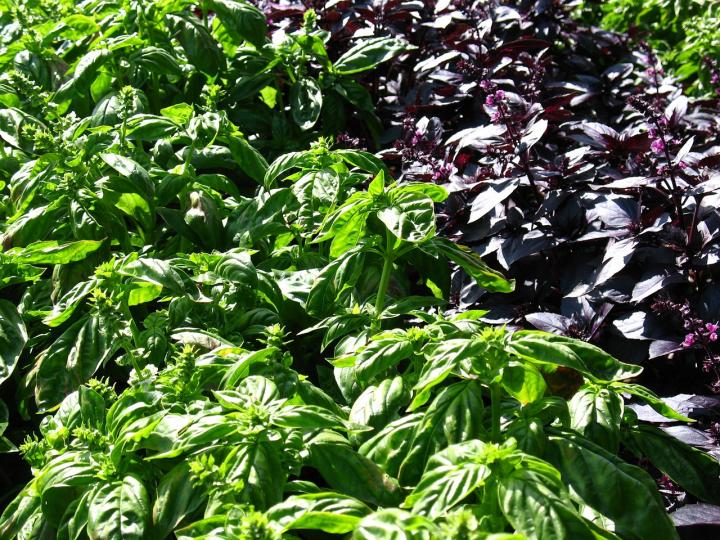
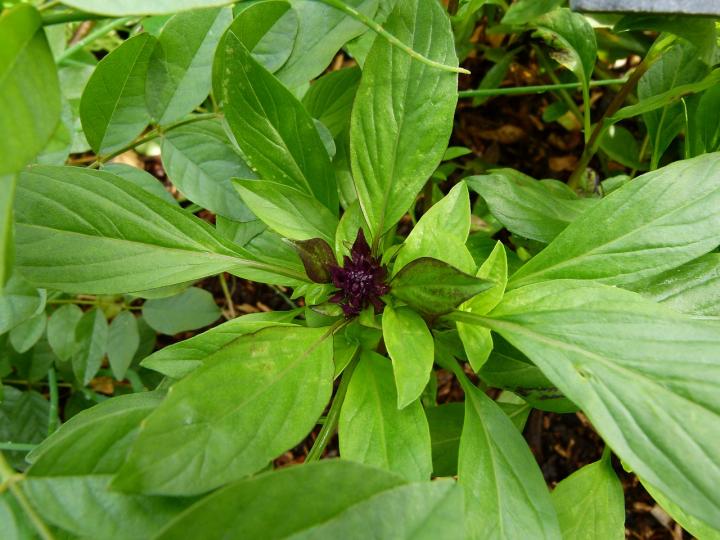
Some have purple or red stems and most have purple flowers. ‘Siam Queen’ was an All-America Selections winner years ago and it has stood the test of time. All the Thai basils we have tried have a strong licorice flavor.
Basil is one of the earliest known herbs, originating in India and Thailand where it was not only a culinary herb but used medicinally and in the Hindu religion. As the plant was carried west, it became part of the cuisine and folklore of many countries. It has been associated with both love and madness! The early Romans thought that it caused insanity. Ancient Greeks believed that to have a successful basil crop you had to shout and swear at the seeds while planting. In Europe, lovers exchanged sprigs of basil as a symbol of faithfulness. In rural Mexico, basil is thought to have the power to return a lover’s roving eye. In Haiti, it was used by the pagan love goddess Erzulie as a protector. Shopkeepers there sprinkle basil water around their stores to ward off evil spirits and bring prosperity.
Basil is fairly easy to grow as long as you don’t rush the season. Wait until the soil has warmed up nicely and night temperatures are reliably mild—above 50 degrees at least—before planting it outside. If it gets too cold at night or sits in cold soil it will sulk and its growth will be set back.
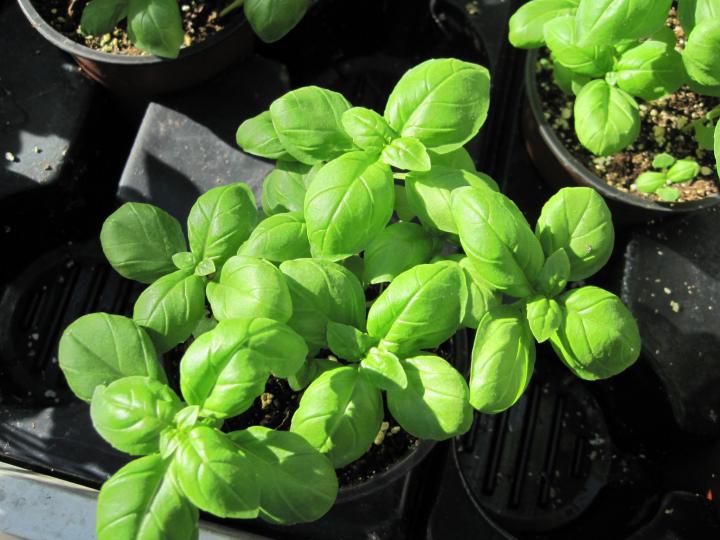
It can be seeded directly in the garden in southern regions that have a long season but we start the seeds indoors about 6 weeks before our last frost so we have robust plants ready for the garden when it warms up. The seeds germinate quickly at 70 to 75 degrees—whether you yell at them or not is up to you.
Basil thrives on heat and full sun. It loves rich moist soil but will grow practically anywhere if watered regularly and fertilized or sidedressed with compost once a month. As a companion plant it is supposed to enhance the growth of tomatoes and peppers and protect them from insects.
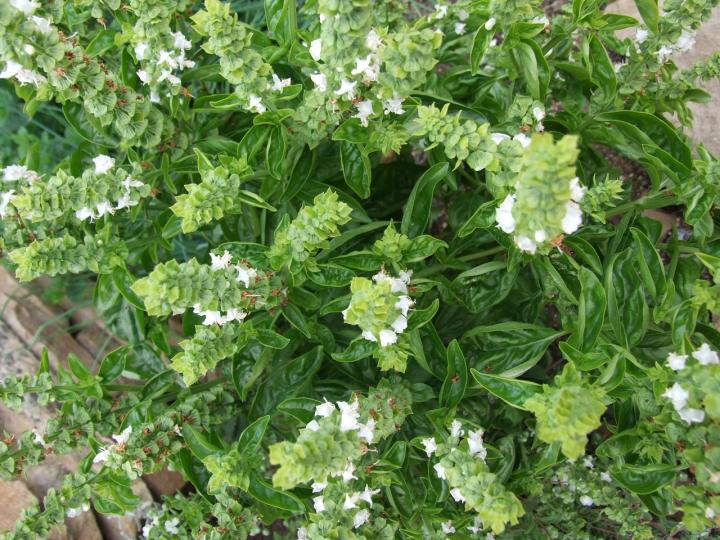
For the best flavor, cut your basil before it flowers. This will also encourage branching and increase your yield. If the flowers do get ahead of you, not to worry—they are edible and make a tasty addition to salad. Since the essential oils are carried in microscopic sacs, the flavor dissipates quickly when the leaves are cut or cooked. Basil should be added at the end of cooking to retain its full flavor. To preserve it for winter use, freeze the leaves in a plastic bag or in water. Better yet —make and freeze lots of pesto. It is delicious as a sandwich spread, mixed with yogurt for a dip, add it to soup, pizza, and of course as a pasta sauce. Fall in love with basil, you’d be crazy not to.
See more about growing basil on the Almanac’s Basil Growing Guide.
~ By Robin SweetserGet inspired by Robin Sweetser's backyard gardening tips. Robin has been a contributor to The Old Farmer's Almanac and the All-Seasons Garden Guide for many years. She and her partner Tom have a small greenhouse business and also sell plants, cut flowers, and vegetables at their local Farmer's Market.
Copyright © www.100flowers.win Botanic Garden All Rights Reserved